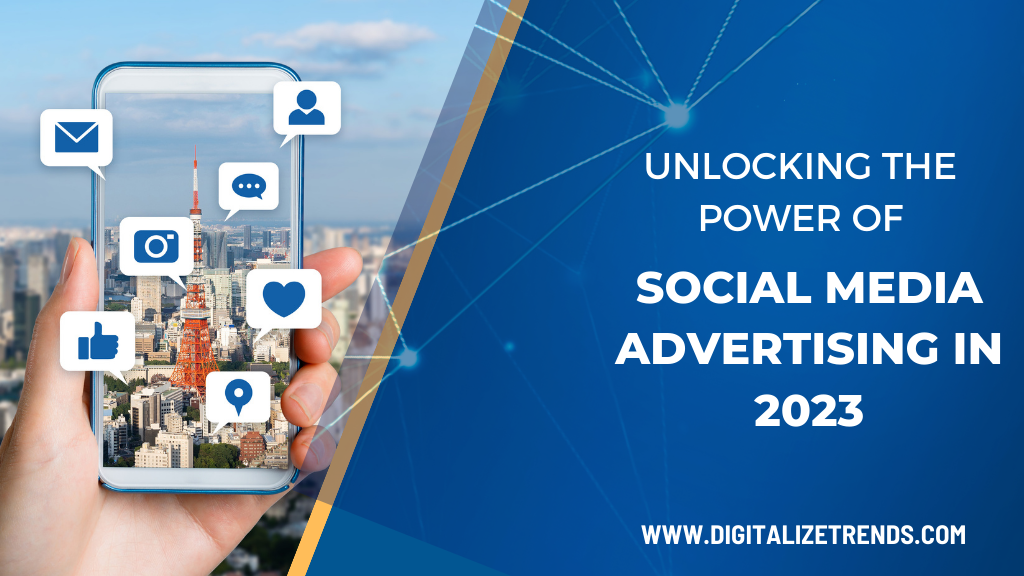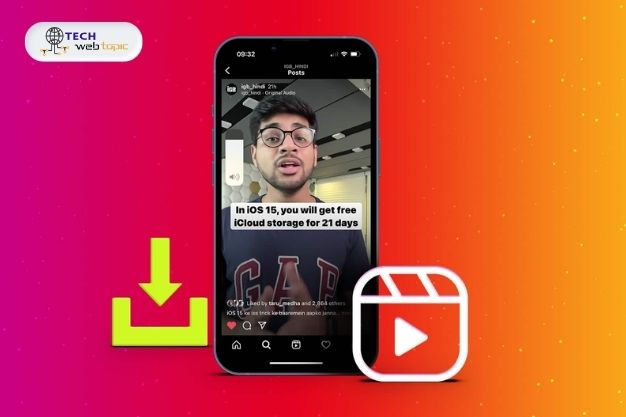Introduction
In the dynamic and rapidly changing digital era of 2023, social media management plays a crucial role in the marketing strategies of all businesses. As social media platforms continue to evolve, it is essential for organizations to proactively stay at the forefront to connect with their customer base and expand their reach effectively.
A notable trend transforming the social media landscape is the emergence of Threads, an independent messaging application introduced by Instagram. This platform presents distinct avenues for businesses to engage with their patrons and actively cultivate lasting relationships.
Advantages of social media advertising
Increased brand awareness
By leveraging social media platforms, you can effectively promote your business, products, or services, immediately boosting brand recognition.
Social media ads provide an excellent opportunity to expose your brand to millions of users even before engaging in clicks and conversions. Whether labeled as “sponsored” in people’s feeds or displayed before a YouTube video, this increased visibility can have a profound impact on enhancing brand recall, even subconsciously.
Enhancing brand awareness brings numerous advantages to your business, regardless of whether you’re a newcomer or an established brand in your industry. The heightened exposure achieved through social media advertising has the potential to generate fresh leads and drive higher conversions for your business. When integrating an Awareness campaign into your paid social media strategy, selecting the most suitable ad format for your objectives is crucial. Research conducted by Magna reveals that 76% of people skip ads while watching YouTube videos.
Hence, if YouTube ads are part of your social media campaign strategy, opting for non-skippable in-stream ads can significantly boost your brand visibility.
Improved brand loyalty
Your business can cultivate a devoted and loyal customer base by actively engaging with your customers on social media. Social media advertising goes beyond simply promoting products or services; it presents a unique opportunity to connect with your target audience and foster genuine relationships.
Social media advertising can potentially serve as a powerful social proofing tool. This, in turn, can enhance brand loyalty and transform casual visitors into lifelong customers.
Leveraging social media advertising allows you to showcase customer testimonials or share compelling case studies, effectively demonstrating your brand’s high level of customer satisfaction.
Moreover, employing remarketing ads on social media can further reinforce brand loyalty by ensuring that your products or services remain at the forefront of your customers and website visitors’ minds. By maintaining a prominent presence, you can continually nurture their connection with your brand and foster long-term loyalty.
Higher conversion rates
Social media advertising plays a crucial role in driving conversions for your business. According to the Digital 2020 report, 27% of people discovered new brands and products through social media ads.
There are various strategies to boost your conversion rate using social media advertising. Platforms like Facebook Ads Manager and LinkedIn Campaigns Manager offer detailed audience targeting, ensuring your ads reach the right people interested in your offerings.
Retargeting campaigns also play a key role in increasing conversions. By re-engaging with warm leads, you can nurture their interest and drive them back to your business.
Remarketing campaigns, particularly on Facebook and Instagram, can effectively encourage visitors with abandoned carts to complete their purchases.
A series of Image ads have shown exceptional performance in driving website traffic and on-site sales, as demonstrated by a Facebook Study. Creating an ad funnel with multiple Image ads can be highly effective.
Platforms like Snapchat, Filters, and Lenses provide an enjoyable way for users to promote your brand to their followers, boosting brand awareness and expanding your reach.
Remember, being social is paramount on social media. Engaging and relevant content resonates with your audience, resulting in brand recall, sharing, and recommendations to their networks. Creating shareable paid content can drive more traffic to your website and improve conversions.
Social media advertising is an advantageous starting point to amplify website traffic and enhance conversions.
Boost leads for your business
Social media advertising is an excellent avenue to increase your business’s exposure and attract a wider customer base.
By implementing targeted lead-generation ad campaigns, you can fully unlock the advantages of social media advertising for your business.
Facebook’s messaging and lead-generation ads offer an ideal solution for customer-focused businesses seeking more leads. Utilizing lead generation ads on Facebook, you can encourage sign-ups for online events, expand your email list before product launches, or gather customer information for future marketing endeavors, among other possibilities.
Moreover, LinkedIn advertising holds substantial potential as a lead acquisition tool for B2B businesses. Whether you’re an eCommerce brand aiming to connect with distributors or a SaaS company striving to expand your customer base, incorporating LinkedIn into your social media advertising strategy is crucial.
In-depth analytics
Social media advertising offers a valuable advantage: access to abundant analytics and statistics. This treasure trove is a dream come true for any marketer!
Instantly, you can assess the performance of your campaigns and evaluate past campaigns. This valuable information empowers you to tailor future campaigns for maximum success. You can optimize live campaigns, conduct A/B tests, and refine your social media advertising strategy.
The benefits of social media advertising analytics extend further. You can leverage these insights to enhance various aspects of your business. For example, your social media ads can provide a reliable gauge of brand sentiment, allowing you to create engaging organic content that resonates with your target customers.
By combining your social media advertising analytics with Google Analytics, you gain a deeper understanding of the marketing tactics that yield the best results for your business. This comprehensive analysis enables informed decision-making and continuously improving your marketing efforts.
Understand your Targeted Audience
Start with your customers.
Your customers are the individuals who actively use your product or service. Therefore, analyzing the success of your offering, solution, marketing efforts, or a combination thereof becomes crucial. It’s the perfect starting point for further improvement.
Begin by examining the demographics of your customers. Consider their job titles, geographical locations, and age groups. Look for patterns that may emerge, especially among your loyal, repeat customers. Additionally, explore any patterns present among your one-time customers.
Next, engage in conversations with your customers. This provides valuable insights into why they love your brand, product, or team. Such information is invaluable in refining your positioning and determining the key benefits to highlight in your copywriting and interactions.
Furthermore, please use this opportunity to inquire about where your customers spend their time and seek advice. Do they influence specific Instagram influencers, industry newsletters, or trusted company blogs? These customer insights serve as valuable data points, enabling you to prioritize marketing efforts on these preferred channels.
Look at your social followers.
Understanding your social followers is crucial in evaluating the appeal of your current marketing strategies and identifying genuinely interested consumers in your brand. Sprout Social states that people follow brands on social media to access discounts, stay updated with company news, and discover new products or services. However, it’s essential to recognize that your social followers may differ from your customers. If you plan to conduct interviews, opt for quick surveys with specific questions, or focus on analyzing demographics and behavior. Here are some key aspects to consider during your analysis:
- Location
- Age
- Career
- Household income
- Activity level
- Other brand followings
Focusing on individuals who actively engage with your social profiles is crucial. The good news is that you can leverage tools to analyze this data effectively, some of which are free. For instance, Buffer offers a free tier that provides valuable insights into your social media performance and audience engagement. Utilizing such tools can help you make informed decisions about your marketing strategies and better connect with your target audience.
Dig into your content analytics.
It’s crucial to delve into the audience visiting your website. Understanding who reads your content downloads your whitepapers, and engages with your videos can provide valuable insights.
Google Analytics is an excellent starting point for gathering this information. Through it, you can gain valuable insights such as:
- Demographics
- Traffic sources
- Topic resonance
- Search terms
By analyzing data from Google Analytics, you can better understand your website audience, refine your marketing strategies, and enhance your overall online presence.
Check out your competitors.
In any business venture, competition is inevitable. No matter your product, offering, or target audience, there will be competitors. However, rather than viewing them as a threat, you can leverage them to your advantage.
Start by examining your competitors’ marketing strategies. Analyze who they are targeting in their campaigns. Are they focusing on Facebook, Instagram, or Twitter for advertising? Please pay attention to the specific audience they address in their ads, and the pain points they emphasize. By thoroughly studying their ads, messaging, and brand, you can develop insights into their target audience. Compare this with your target audience, identifying overlaps and differences.
The overlapping areas can provide valuable insights into potential shared customer segments. Understanding these shared segments allows you to fine-tune your marketing efforts to appeal to this audience better. On the other hand, the differences between your target audience and your competitors’ can highlight areas where you can differentiate your brand.
By emphasizing these distinctions, you can better articulate your brand’s unique value proposition and stand out in the market.
Ultimately, studying and learning from your competitors’ strategies can help you refine your marketing approach, optimize your messaging, and carve out a competitive edge in the industry.
Set your parameters
Identifying who your customer isn’t may seem like an unconventional step in the process, but it holds significant importance. Clearly defining your excluded audience helps refine your marketing efforts and business strategy. Let’s explore this crucial step using various sources of information:
- Customer Interviews
- Social Following
- Website Visitors
- Competitors’ Audiences
Once you gather all this information, you can set clear parameters for your target audience. For example:
- If you are a pet store that doesn’t stock reptile tanks, your target audience does not include iguana owners.
- Selling boozy milkshakes? Your target audience excludes anyone under 21, even if it might take time to be evident from your images.
- If your services are only available to US customers, your target audience excludes those outside the US.
Setting these parameters provides clarity and direction to your marketing efforts, allowing you to focus on the right audience, cater to their specific needs, and tailor your business strategy accordingly. By understanding who you aren’t targeting, you can allocate resources more efficiently and maximize your chances of success.
Create customized and engaging content.
Understand your audience: Research your target audience’s preferences, interests, and pain points.
Tailor content to the customer journey: Address specific needs at different journey stages.
Personalization and segmentation: Use data-driven approaches to deliver content tailored to individual preferences.
Incorporate storytelling and emotion: Engage your audience through compelling narratives and emotional connections.
Utilize interactive content: Use quizzes, polls, and interactive videos to boost engagement.
Enhance visual appeal: Incorporate eye-catching visuals like images and infographics.
Encourage user-generated content: Involve your audience in content creation to build a sense of community.
Maintain consistency and authenticity: Be genuine in your brand voice and maintain consistent messaging.
Include a clear call-to-action: Guide your audience on desired next steps in each content piece.
Monitor and adapt: Analyze content performance and gather feedback to refine your strategy.
Analyze your advertising success.
Set clear objectives: Define specific goals and metrics to measure the success of your advertising campaigns.
Track key performance indicators (KPIs): Monitor relevant KPIs, such as click-through rates (CTR), conversion rates, and return on investment (ROI).
Analyze audience engagement: Examine how your target audience engages with your ads, including likes, shares, comments, and mentions.
A/B test variations: Conduct A/B tests to compare ad elements (e.g., visuals, headlines, calls-to-action) and identify the most effective combinations.
Measure website traffic: Analyze the impact of your ads on website traffic and user behavior using tools like Google Analytics.
Assess ad placement: Evaluate the performance of ads across different platforms and placements to determine which yields the best results.
Consider attribution models: Use attribution models to understand how various touchpoints contribute to conversions and sales.
Monitor cost-effectiveness: Compare advertising costs to the generated revenue to gauge the overall effectiveness of your campaigns.
Segment data by demographics: Analyze ad performance based on demographics to identify which audience segments respond best to your ads.
Learn from competitors: Study the advertising strategies of your competitors to gain insights and refine your approaches.
Adjust and optimize: Based on the analysis, make data-driven adjustments to your advertising strategies for improved performance over time.
Future Aspects of social advertising
Advanced AI Integration: Social media platforms will continue to leverage AI to enhance user experiences, personalize content, and optimize ad targeting.
Virtual and Augmented Reality: Virtual and augmented reality technologies will become more prevalent, offering new immersive marketing opportunities and engaging user experiences.
Influencer Marketing Evolution: Influencer marketing will evolve, with an increased focus on micro and nano influencers and a greater emphasis on authenticity and niche audiences.
Ephemeral Content Growth: Ephemeral content, such as Stories, will continue to rise in popularity, providing businesses with a more authentic and time-sensitive way to connect with their audience.
Social Commerce Expansion: Social media platforms will further integrate shopping features, making it easier for users to discover and purchase products directly from social media posts.
Privacy and Data Regulations: Social media platforms will face stricter privacy and data regulations, impacting ad targeting and customer data usage.
Community Building and Engagement: Brands will invest more in community-building strategies to foster deeper connections with their audience, encouraging loyalty and advocacy.
Niche Social Platforms: Niche social platforms will gain traction, allowing businesses to target specific audiences with tailored content.
Video Dominance: Video content will continue to dominate social media, with live streams and short-form videos gaining popularity.
Personalized Messaging: Brands will utilize messaging apps and chatbots for personalized customer interactions and real-time support.
Sustainability and Social Impact: Social media marketing will see an increased emphasis on sustainability, social responsibility, and purpose-driven campaigns.
Cross-Platform Integration: Businesses will integrate their social media efforts with other marketing channels, providing a seamless and cohesive brand experience.
User-Generated Content Emphasis: User-generated content will remain influential, with brands encouraging and featuring content created by their customers to build trust and authenticity.
Data Privacy and Transparency: Brands will prioritize transparency and communication with users regarding data usage to build trust in the wake of data privacy concerns.
Mobile Optimization: Mobile-first strategies will remain essential as social media usage on mobile devices grows.
Rise of Social Listening: Social listening tools will be increasingly utilized to monitor brand sentiment, gather customer feedback, and identify emerging trends.
FAQ
What is the future of social media advertising?
The future of social media advertising will be driven by advanced AI integration, augmented reality experiences, enhanced personalization, and an increased focus on privacy and data regulations.
How to create a social media strategy for 2023?
To create a social media strategy for 2023, businesses should focus on audience segmentation, leverage interactive content, prioritize video marketing, adopt emerging platforms, and incorporate sustainability and social impact into their campaigns.
What is the power of social media in advertising?
The power of social media in advertising lies in its extensive reach, precise ad targeting capabilities, real-time engagement with the audience, ability to drive brand awareness, and facilitate authentic connections with customers.
What is the best social media platform in 2023?
The best social media platform 2023 will depend on the target audience and business objectives. While Facebook and Instagram remain popular, emerging platforms like TikTok and Clubhouse may gain significant traction.
What is the trend for social advertising in 2023?
The trend for social advertising in 2023 includes:
- Increased investment in influencer marketing.
- The rise of ephemeral content.
- Continued growth of social commerce.
- The adoption of interactive and immersive ad formats.
How will social media marketing change in 2023?
In 2023, social media marketing will witness the integration of more AI-driven features, a stronger emphasis on privacy and data transparency, a surge in video and live-streaming content, and the proliferation of niche social platforms.
How will social media marketing change in 2023?
In 2023, social media marketing will shift towards community-centric strategies, greater reliance on user-generated content, an increased focus on social listening for brand insights, and an alignment with sustainability and purpose-driven initiatives.
Conclusion
In conclusion, as we delve into the promising landscape of social media advertising in 2023, businesses stand on the brink of unparalleled opportunities. Embracing the future of social media advertising requires a keen understanding of our target audience’s evolving preferences and behaviors.
Leveraging advanced AI integration, interactive content, and augmented reality experiences will elevate our campaigns. Moreover, as we navigate the ever-changing digital landscape, the power of authentic connections and purpose-driven initiatives will drive lasting impact.
By embracing innovation, transparency, and social responsibility, we can unlock the full potential of social media advertising in 2023, establishing meaningful relationships with our audience and propelling our brands toward sustainable success in the digital era.








